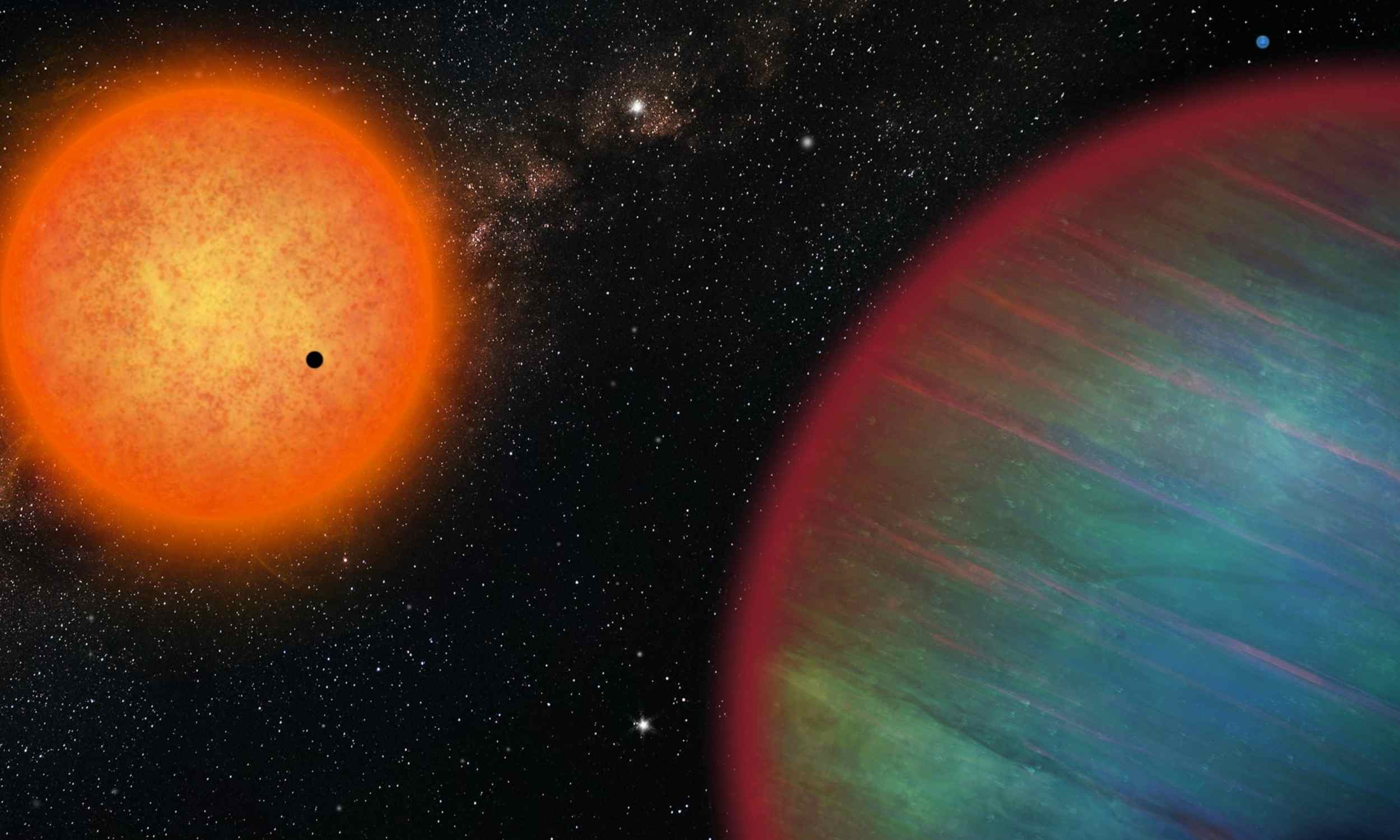A rocky planet zips around the faint orange star WASP-132 once every 24 hours and 17 minutes. Far beyond it, a frigid gas giant drifts along a path that takes five Earth years to complete.
Lead author Nolan Grieves of the University of Geneva and colleagues uncovered the pair while re‑examining nine years of telescope data.
Their find shows that hot Jupiter systems can shelter nearby small planets rather than always clearing them out.
Sprinting around WASP-132
The inner world, named super‑Earth WASP‑132 c, skims only about 1.7 million miles from its star, closer than many low‑Earth satellites circle ours.
Despite the proximity, its measured bulk density of 5.5 g/cm³ hints at a largely rocky composition, slightly heavier than Earth itself.
TESS space‑telescope photometry reveals that each transit lasts just over one hour. Follow‑up spectra show a planetary mass roughly six times that of Earth, confirming its compact size.
“This is the first time we have observed such a configuration,” said Dr. David Armstrong, University of Warwick, referring to a super‑Earth tucked inside a hot‑Jupiter system.
Armstrong’s team supplied high‑cadence data with the HARPS spectrograph, boosting the radial velocity precision enough to isolate the tiny wobble of the 24‑hour world.
An icy giant in the dark
WASP‑132 d, the newly announced outer planet, orbits nearly 252 million miles out, about the distance from the Sun to the asteroid belt.
It tips the scale at 5.2 times Jupiter’s mass and likely sports deep layers of methane‑rich clouds that never see direct starlight.
At such a distance the planet receives less than 1 percent of the light falling on Earth. Temperatures could hover hundreds of degrees below freezing, giving researchers a rare look at a young ice giant still cooling.
Because the orbit spans half a decade, astronomers relied on more than nine years of CORALIE spectrograph data to trace its slow pull.
The long baseline also revealed a steady velocity trend that hints at yet another, unseen companion further out.
Finding WASP-132
Space‑based photometry from TESS and CHEOPS provided crisp light curves, flagging potential planets.
Ground‑based spectra from HARPS and CORALIE then measured stellar wobble to pin down masses, a one‑two punch that has become routine for multiplanet hunts.
A multidimensional Gaussian‑process model filtered out chromospheric activity signals from starspots rotating every 31 days. Without that step the planet signatures would have drowned in stellar noise.
For the inner planet, the team measured a radial‑velocity amplitude of just 4.6 ft/s, about walking speed, showcasing the reach of modern spectrographs.
The outer giant’s tug, in contrast, registers at over 200 ft/s, easy to spot once enough years of data accumulate.
Together the datasets produce a complete family portrait: a small rocky planet at 0.018 AU, a seven‑day hot Jupiter originally found in 2017, and the distant icy behemoth at 2.71 AU. Such architectural detail lets theorists test how planets migrate after formation.
Lessons for planetary architects
Hot Jupiters usually travel inward through high‑eccentricity interactions that scatter smaller worlds. Finding a close‑in rocky planet surviving next to one challenges that picture.
The team argues that WASP‑132 b may have drifted quietly through the disk, leaving the inner super‑Earth untouched and preserving a dynamically “cool” history. Its near‑circular orbit and moderate equatorial gravity support that calm evolution.
François Bouchy of UNIGE called the system “a remarkable laboratory for studying the formation and evolution of multi‑planetary systems.”
He noted that mixing planet sizes and separations in one place lets models test where solid cores assemble and where gas envelopes inflate.
Interior modeling suggests the ice giant holds at least 17 Earth masses of heavy elements, while the inner planet is nearly bare of volatiles.
These contrasting chemistries likely reflect where each body accreted before migration reshuffled the deck.
Organic chemistry orbiting WASP-132
The discovery connects with current research in astrochemistry, which investigates how complex organic molecules develop on interstellar ice grains.
These molecules are considered important because they match those found in comets and asteroids.
When objects like these collide with planets, they can deliver both water and organic compounds. A distant ice giant such as WASP‑132 d helps maintain the low temperatures needed for these molecules to survive in space.
By sampling the planet’s atmosphere once it transits, as James Webb could do if orbital alignments cooperate, scientists hope to detect the chemical fingerprints of that frozen chemistry.
Spectral clues to methane, ethane, or even more complex organics would connect planetary science with prebiotic chemistry.
Meanwhile, the rocky inner planet lies far too close for life as we know it; its dayside bakes at an estimated 1 750°F. Yet its bulk density offers a laboratory for studying how silicate mantles and iron cores behave under extreme stellar radiation.
Where astronomers look next
Future Gaia data releases may detect the astrometric wobble of the ice giant, pinning its true mass and orbital tilt. Additional spectra could also reveal whether the outer trend is a brown dwarf or another planet.
The team has already secured ESPRESSO time to measure spin‑orbit alignment during transits. If both planets share the star’s equatorial plane, the quiet‑migration scenario gains weight.
Surveys are now re‑checking hot‑Jupiter hosts for hidden, fast‑orbiting companions like WASP‑132 c. As technology drives radial‑velocity precision below three feet per second, many more “day‑long year” planets may come to light.
Finding them will refine models of planetary system diversity and, by extension, the odds of habitable worlds. Each well‑characterized system moves the field from speculation toward statistical certainty.
The study is published in Astronomy & Astrophysics.
Image credit: Thibaut Roger, Université de Genève.
—–
Like what you read? Subscribe to our newsletter for engaging articles, exclusive content, and the latest updates.
Check us out on EarthSnap, a free app brought to you by Eric Ralls and Earth.com.
—–
